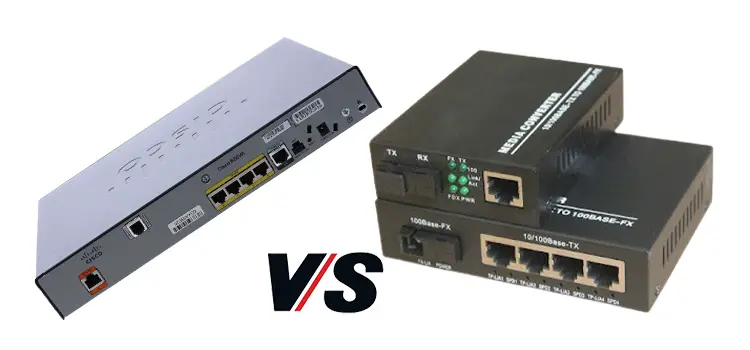How Technology Simplifies Employee Organization
Efficient employee organization is paramount for productivity and success. Technology has emerged as a formidable ally, offering a plethora of tools and solutions to streamline organizational tasks. Whether you’re managing a small team or overseeing a large workforce, leveraging technology can significantly simplify the process of employee organization, ensuring smoother operations and enhanced collaboration.

Automated Scheduling
Gone are the days of manually juggling schedules and calendars. With technological advancements, you can now automate the scheduling process, saving time and minimizing errors. Utilize scheduling software that allows you to input employee availability, preferences, and shift requirements effortlessly, and go to www.timeclockwizard.com, where you can access intuitive tools designed to streamline scheduling tasks with ease. These tools can generate optimized schedules, taking into account factors like workload distribution, skill sets, and time-off requests. By automating scheduling tasks, you can allocate resources efficiently, reduce conflicts, and ensure adequate coverage without the hassle of manual coordination.
Centralized Communication Platforms
Effective communication lies at the heart of a successful employee organization. Technology provides a range of centralized communication platforms, such as Slack, Microsoft Teams, or Asana, where you can connect with your team in real time, irrespective of geographical boundaries.
These platforms offer features like instant messaging, file sharing, and task assignment, fostering seamless collaboration and information exchange. By centralizing communication, you eliminate the need for scattered email threads and disjointed conversations, enabling smoother coordination and quicker decision-making processes.
Mobile Accessibility
The ability to access organizational tools and information on the go is indispensable. Mobile accessibility has become a key feature of modern employee organization technology, enabling you and your team to stay connected and productive from anywhere, at any time.
Whether it’s reviewing schedules, responding to messages, or accessing documents, mobile apps provide flexibility and convenience, empowering employees to work efficiently even outside the traditional office setting. By embracing mobile accessibility, you ensure that organizational tasks remain seamless and accessible, enhancing productivity and enabling greater work-life balance for your team members.
Cloud-Based Collaboration Tools
In today’s interconnected world, remote work has become increasingly prevalent, necessitating robust collaboration tools that transcend physical boundaries. Cloud-based collaboration tools like Google Workspace, Dropbox, or Trello enable teams to work together seamlessly, regardless of their location.
These platforms facilitate real-time document editing, version control, and project management, promoting productivity and teamwork. With cloud-based collaboration tools, you can create, share, and collaborate on documents and projects effortlessly, fostering a culture of flexibility and adaptability within your organization.
Integrated HR Management Systems
Managing employee information, from onboarding to performance evaluations, can be overwhelming without the right tools. Integrated HR management systems consolidate all HR-related tasks into a single platform, streamlining processes and ensuring data accuracy.
From maintaining employee records and tracking attendance to facilitating performance reviews and administering benefits, these systems automate administrative tasks, allowing you to focus on strategic initiatives. By leveraging integrated HR management systems, you not only enhance efficiency but also enhance transparency and compliance with regulations.
- Ensure compliance: Integrated HR management systems often come equipped with features to ensure compliance with labor laws and regulations. From tracking employee hours for wage and hour compliance to storing sensitive employee data securely, these systems help mitigate legal risks and ensure adherence to industry standards.
- Enhance data accuracy: By consolidating all HR-related information into a single platform, integrated systems minimize the risk of errors and discrepancies. This centralized approach eliminates the need for manual data entry across multiple systems, reducing the likelihood of data duplication or inconsistencies.
- Streamline onboarding: Integrated HR management systems streamline the onboarding process by automating tasks such as document submission, training assignments, and policy acknowledgments. This saves time for HR personnel and ensures a smoother transition for new hires, setting the stage for a positive employee experience from day one.
Employee Performance Tracking
Beyond mere organization, technology also facilitates the monitoring and evaluation of employee performance. Performance tracking software enables you to set goals, track progress, and provide feedback in a structured manner.
These tools often come with features such as performance dashboards, goal tracking, and analytics capabilities, allowing you to gain insights into individual and team performance metrics. By leveraging performance tracking technology, you can identify areas for improvement, recognize top performers, and align employee objectives with organizational goals effectively. This not only enhances productivity but also fosters a culture of accountability and continuous improvement within your team.

Technology catalyzes simplifying employee organization, offering an array of tools and solutions designed to streamline processes and enhance efficiency. From automated scheduling and centralized communication platforms to integrated HR management systems and cloud-based collaboration tools, the possibilities are endless. By embracing technology, you empower yourself to optimize employee organization effectively, driving productivity, and fostering a collaborative work environment.
Subscribe to our newsletter
& plug into
the world of PC Hardwares

![[Fix] Realtek USB Wireless Lan Utility Not Working (100% Working)](https://www.hardwarecentric.com/wp-content/uploads/2023/01/Realtek-USB-Wireless-Lan-Utility-Not-Working.jpg)
![[Fix] Ethernet Not Working But WIFI Is on (100% working)](https://www.hardwarecentric.com/wp-content/uploads/2021/10/Ethernet-Not-Working-but-wifi-is-on.jpg)

![[2 Fixes] 15c20b67-12e7-4bb6-92bb-7aff07997402: DistributedCOM error 10016](https://www.hardwarecentric.com/wp-content/uploads/2021/10/15c20b67-12e7-4bb6-92bb-7aff07997402.jpg)

